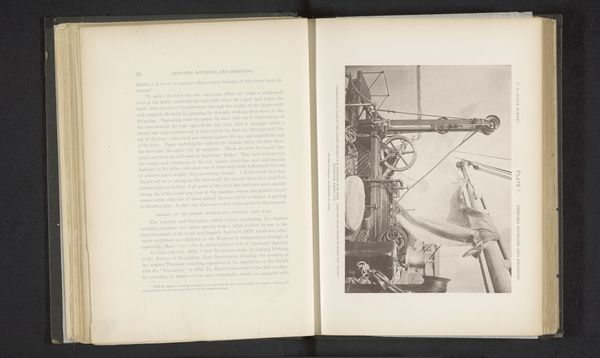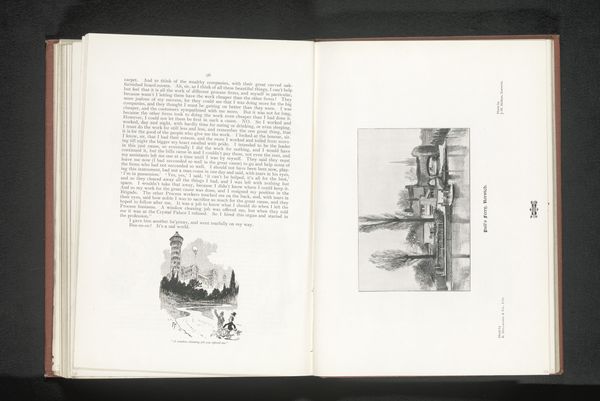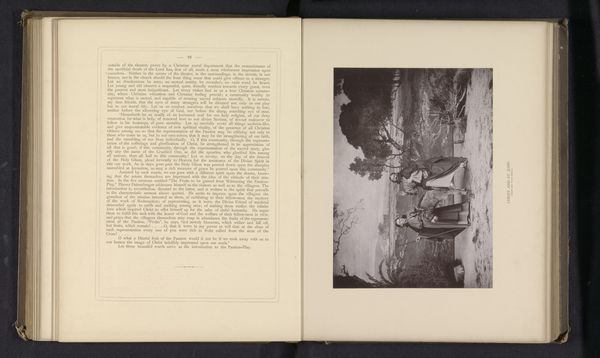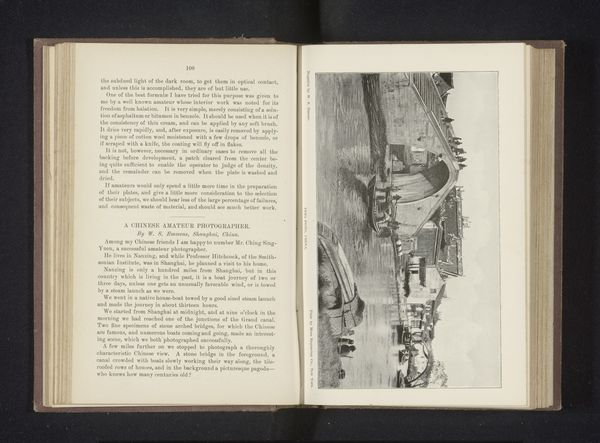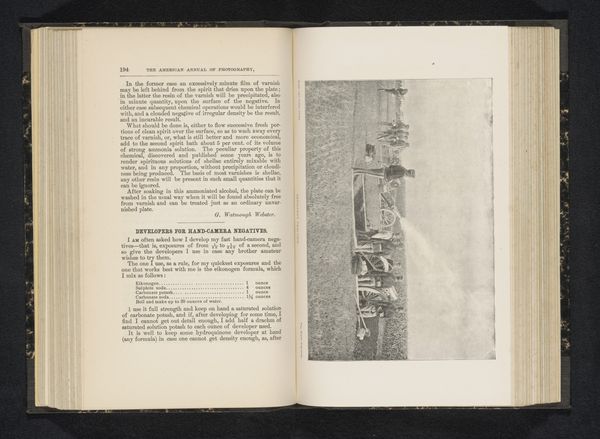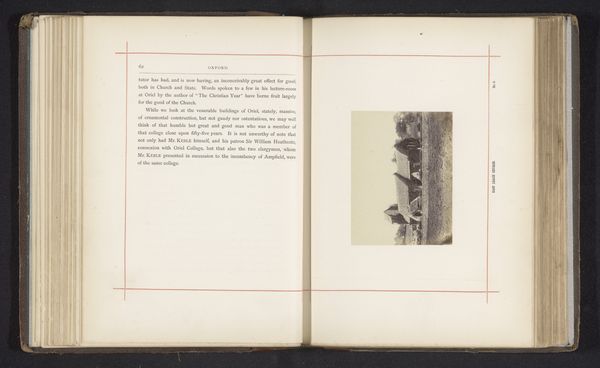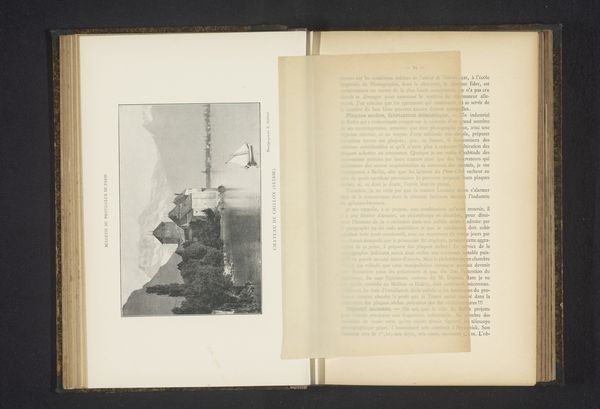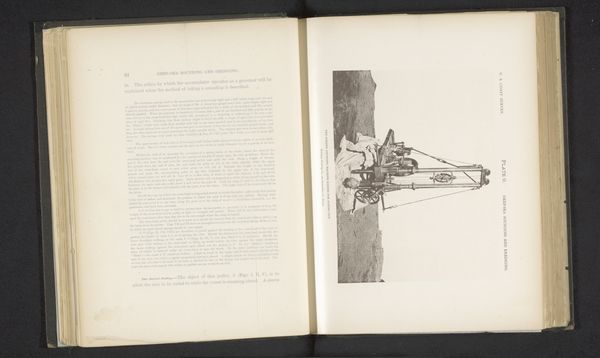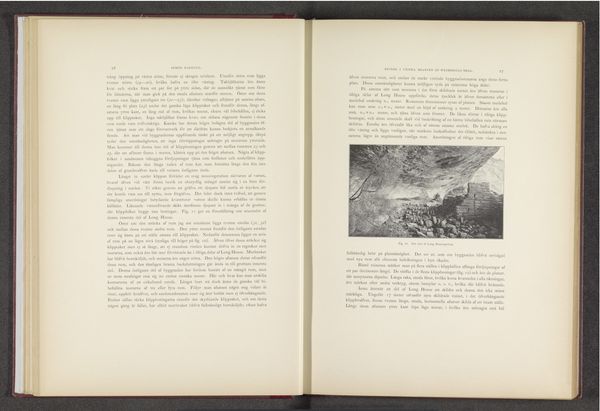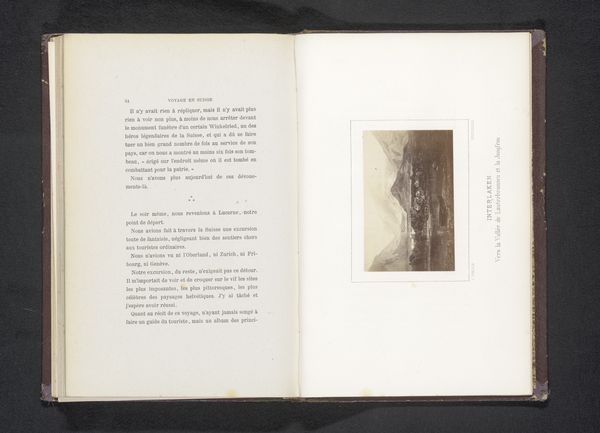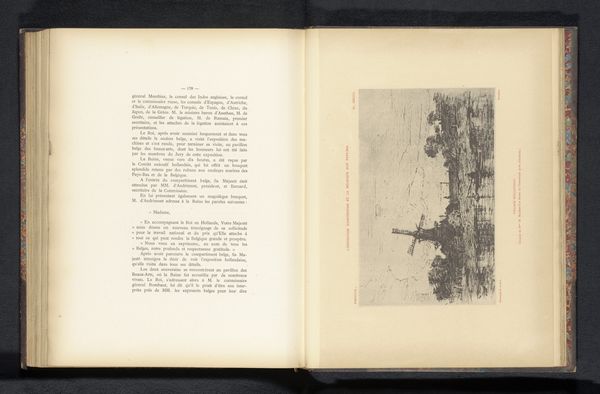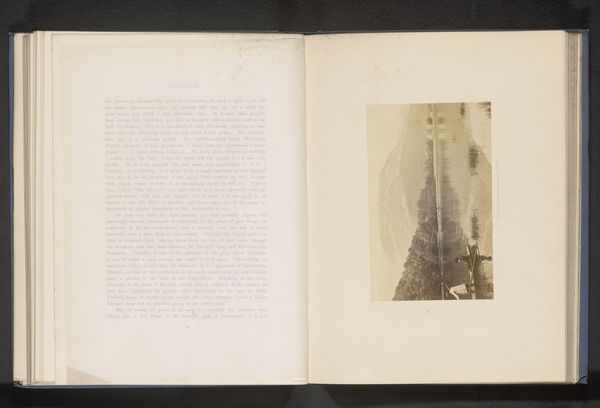
print, photography, engraving
# print
#
photography
#
academic-art
#
engraving
Dimensions: height 147 mm, width 188 mm
Copyright: Rijks Museum: Open Domain
Curator: Here we have an image entitled "Sigsbee-sondeermachine," which roughly translates to Sigsbee sounding machine. It's believed to date from before 1880. Editor: My first thought is of clockwork; it has that air of Victorian precision, like a machine meticulously marking time or…sounding the depths? Curator: Exactly! This image captures a specific type of oceanographic technology. As the name suggests, it's all about measuring the depth of water. This print employs a now antiquated technology to provide accurate depth readings which was revolutionary in its time. You see, the materials would be carefully calibrated to get detailed soundings. Editor: I am wondering what drove its development—the demand, say, of burgeoning maritime trade and exploration. So, not just depths of the oceans, but depths of commerce too. I imagine these images circulated as part of very niche publications of this kind? It looks like an engraving in a printed book, open, maybe showing off the complexity and reliability to a specific industry that would make the use of it. Curator: Absolutely, you are so correct, it may well have been for trade—I hadn't even thought about that angle. Yes, it’s also photographic reproduction printed onto paper; an ingenious process indeed when the reproduction is nearly the same as looking at the source from which the image originated. What intrigues me are the fine lines of the engraving and how a relatively basic picture like this provides this illusion of perspective in a three-dimensional way. Almost as if there are secrets lurking below, which leads me to wonder whether these details hide deliberate symbolism—a subtle acknowledgement of art transcending mere measurement. Editor: That sense of mystery is precisely what pulls me in. Knowing that beneath those serene surfaces lies the unknown is exciting. These intricate mechanical renderings are quite lovely considering their work. Curator: So, what began as an object of function is a source of creativity, a kind of art form with mechanical elements that capture our interest. Editor: And what appears to be a straightforward industrial documentation subtly morphs into a reflection on time, technology, labor, and the very act of perception itself.
Comments
No comments
Be the first to comment and join the conversation on the ultimate creative platform.
